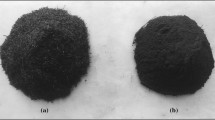Abstract
Biomass produced ashes, upon certain conditions (chemical configuration, level of fineness) can posses pozzolanic properties. Rice husk ash (RHA), an agro-industrial by-product produced of the rice industry, can be utilized successfully (in terms of concrete properties and durability indicators) as a pozzolanic material (replacing cement to a certain extend) in concrete mix design. The question is if such an endeavor is viable from an economic point of view. Such is the aim of this study. Upon a brief presentation of some of the authors’ research results on the sound viability of RHA as a cement replacement material, an assessment of the techno-economical characteristics of RHA production is taking place. Particular attention has being paid to factors as treatment process, fixed/operational cost, production cost and profit. In addition cost-benefit, short sensitivity and risk analyses were also performed aiming to evaluate the economic viability for investment on RHA pozzolanic material production and the dependence of investment characteristics on production capacity. Overall, the techno-economical analysis presented in this study provides precise demands on capital for a fixed investment, provisions for operational capital and finally provisions for revenue.





Similar content being viewed by others
References
Ganesan, K., Rajagopal, K., Thangavel, K.: Evaluation of bagasse ash as supplementary cementitious material. Cem. Concr. Compos. 29(6), 515–524 (2007)
Sousa-Coutinho, J., Papadakis, V.G.: Rice husk ash: importance of fineness for its use as a pozzolanic and chloride-resistant material. In: Proceedings of the 12th International Conference on Durability of Building Materials and Components, Porto, Portugal (2011)
Wang, S., Miller, A., Llamazos, E., Fonseca, F., Baxter, L.: Biomass fly ash in concrete: mixture proportioning and mechanical properties. Fuel 87, 365–371 (2008)
Rajamma, R., Ball, R.J., Tarelho, L.A.C., Geoff, A.C., Labrincha, J.A., Ferreira, V.M.: Characterisation and use of biomass fly ash in cement-based materials. J. Hazard. Mater. 172, 1049–1060 (2009)
Loo, S.V., Koppejan, J.: Handbook of biomass combustion and co-firing. Twente University Press, The Netherlands (2003)
Concrete, Ecosmart: Environmental impact: cement production and the CO2 challenge. Ecosmart Foundation, Canada (2008)
IEA Statistics: International energy agency statistics renewables information, Paris. IEA Publications, France (2011)
Von Bergs, W., Feuerborn, H.J.: Present situation and perspectives of CCP management in Europe. In: Proceedings of 2005 World of Coal Ash, April 11–15, USA: ECOBA (European Coal Combustion Products Association) (2005)
Zhang, M.H., Malhotra, V.H.: High perfomance concrete incorporating rice husk ash as a supplementary cementing material, ACI Mater. J. 8, 629–636 (1996)
Chandra, S.: The use of rice husks in concrete. In: Chandra, S. (ed.) Waste Materials Used in Concrete Manufacturing, William Andrew Publishing/Noyes (1997)
Sousa-Coutinho, J.: The combined benefits of CPF and RHA in improving the durability of concrete structures. Cem. Concr. Compos. 25(9) (2003)
Ganesan, K. R., Thangavel, K.: Evaluation of bagasse ash as supplementary cementitious material, Cem. Concr. Compos., 29, 515–524 (2007)
Antiohos, S.K., Papadakis, V.G., Tsimas, S.: Rice husk ash (RHA) effectiveness in cement and concrete as a function of reactive silica and fineness. Cem. Concr. Res. 61–62, 20–27 (2014)
Papadakis, V.G.: Tsimas. S.: supplementary cementing materials in concrete Part I: efficiency and design. Cem. Concr. Res. 32, 1525–1532 (2002)
Papadakis, V.G., Antiohos, S., Tsimas, S.: Supplementary cementing materials in concrete: part II: a fundamental estimation of the efficiency factor. Cem. Concr. Res. 32(10), 1533–1538 (2002)
Papadakis, V.G., Demis, S.: Predictive model of concrete compressive strength based on cement strength class. Comput. Concr. 11(6), 587–602 (2013)
Demis, S., Tapali, J., Papadakis, V.G.: An investigation of the effectiveness of the utilization of biomass ashes as pozzolanic materials. Constr. Build. Mater. 68, 291–300 (2014)
Tapali, J., Demis, S., Papadakis, V.G.: Sustainable concrete mix design for a target strength and service life. Comput. Concr. 12(6), 755–774 (2013)
ASTM Standard C1202-12. Standard test method for electrical indication of concrete’s ability to resist chloride ion penetration. USA: ASTM International; 2012. doi:10.1520/C1202-12
Tapali, J., Demis, S., Papadakis, V.G.: Use of new industrial by-products and mixtures for reducing the environmental cost of constructions. In: EuroCoalAsh Conference, Thessaloniki, Greece (2012)
Final Report, “Investigation for development of advanced and high-added value materials from rice husk ash: PYRICE”, Program: “COMPETITIVENESS -ACTION: INTERNATIONAL COOPERATION IN THE INDUSTRIAL RESEARCH” of the Greek Ministry of Development, General Secretariat for Research and Technology (GSRT), Coordinator: AGRINO, Research performers (sub-contractors): National Technical University of Athens (NTUA), University of Porto (FEUP), University of Dundee (2008)
Author information
Authors and Affiliations
Corresponding author
Rights and permissions
About this article
Cite this article
Demis, S., Tapali, J.G. & Papadakis, V.G. Plant Design and Economics of Rice Husk Ash Exploitation as a Pozzolanic Material. Waste Biomass Valor 6, 843–853 (2015). https://doi.org/10.1007/s12649-015-9412-1
Received:
Accepted:
Published:
Issue Date:
DOI: https://doi.org/10.1007/s12649-015-9412-1




